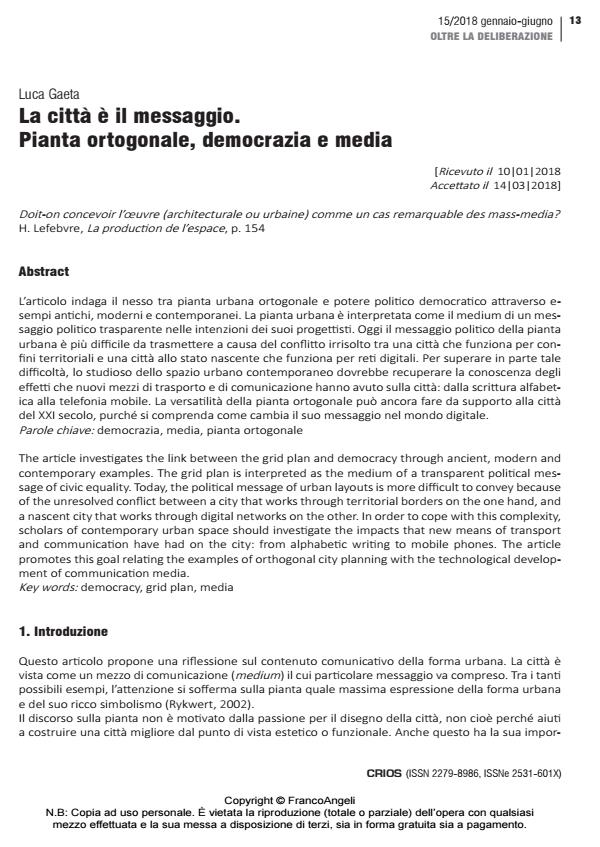La città è il messaggio. Pianta ortogonale, democrazia e media
Titolo Rivista CRIOS
Autori/Curatori Luca Gaeta
Anno di pubblicazione 2018 Fascicolo 2018/15
Lingua Italiano Numero pagine 12 P. 13-24 Dimensione file 356 KB
DOI 10.3280/CRIOS2018-015002
Il DOI è il codice a barre della proprietà intellettuale: per saperne di più
clicca qui
Qui sotto puoi vedere in anteprima la prima pagina di questo articolo.
Se questo articolo ti interessa, lo puoi acquistare (e scaricare in formato pdf) seguendo le facili indicazioni per acquistare il download credit. Acquista Download Credits per scaricare questo Articolo in formato PDF

FrancoAngeli è membro della Publishers International Linking Association, Inc (PILA)associazione indipendente e non profit per facilitare (attraverso i servizi tecnologici implementati da CrossRef.org) l’accesso degli studiosi ai contenuti digitali nelle pubblicazioni professionali e scientifiche
L’articolo indaga il nesso tra pianta urbana ortogonale e potere politico democratico attraverso esempi antichi, moderni e contemporanei. La pianta urbana è interpretata come il medium di un messaggio politico trasparente nelle intenzioni dei suoi progettisti. Oggi il messaggio politico della pianta urbana è più difficile da trasmettere a causa del conflitto irrisolto tra una città che funziona per confini territoriali e una città allo stato nascente che funziona per reti digitali. Per superare in parte tale difficoltà, lo studioso dello spazio urbano contemporaneo dovrebbe recuperare la conoscenza degli effetti che nuovi mezzi di trasporto e di comunicazione hanno avuto sulla città: dalla scrittura alfabetica alla telefonia mobile. La versatilità della pianta ortogonale può ancora fare da supporto alla città del XXI secolo, purché si comprenda come cambia il suo messaggio nel mondo digitale.
Parole chiave:Democrazia, media, pianta ortogonale
- Gli ordinamenti spaziali dell'epoca digitale: oltre il dualismo Luca Gaeta, in CRIOS 18/2020 pp.37
DOI: 10.3280/CRIOS2019-018004
Luca Gaeta, La città è il messaggio. Pianta ortogonale, democrazia e media in "CRIOS" 15/2018, pp 13-24, DOI: 10.3280/CRIOS2018-015002